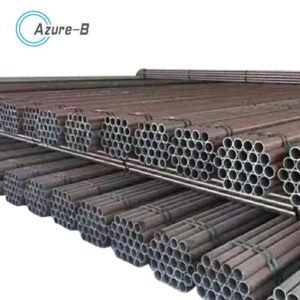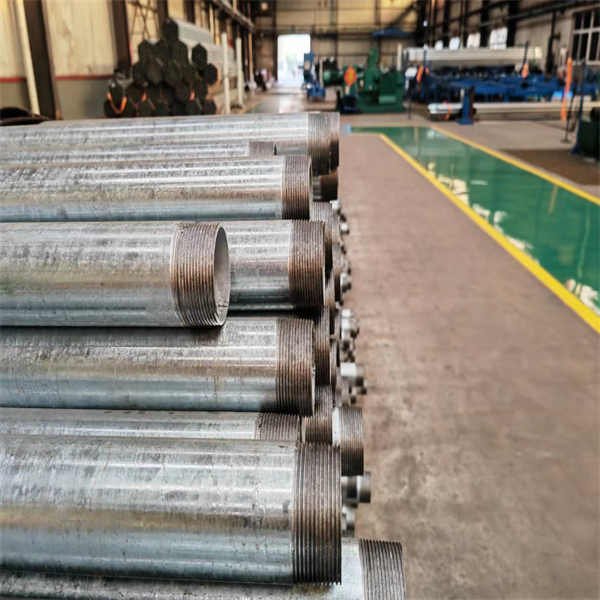firefighting pipe supplier
Firefighting pipes are a specialized category of piping systems used primarily in fire protection services. They play a critical role in delivering water or other fire-retardant substances to extinguish or control fires in various settings.
Description
Firefighting pipes are a specialized category of piping systems used primarily in fire protection services. They play a critical role in delivering water or other fire-retardant substances to extinguish or control fires in various settings. Here’s an overview of their features, types, and standards:
Features
Material: Typically made from steel or ductile iron, these pipes are designed to withstand high pressures and are often coated or galvanized to resist corrosion.
Durability: They must be robust and durable, as they are crucial for safety in emergencies.
Pressure Rating: Firefighting pipes have a high-pressure rating to ensure that they can deliver fire retardants effectively across different distances and heights.
Compatibility: They are often compatible with various types of firefighting equipment like sprinkler systems, hose reels, and hydrants.
Common Types
Sprinkler System Pipes: Used in automatic sprinkler systems in buildings. These pipes remain filled with water and are activated when a fire is detected.
Standpipe Systems: These are the systems of pipes that supply water to hose connections, typically found in stairwells of multi-story buildings.
Underground Fire Lines: Buried pipes that supply water to hydrants and other fire suppression systems.
Standards and Certification
- NFPA Standards: The National Fire Protection Association (NFPA) provides standards like NFPA 13 for the installation of sprinkler systems, including specifications for pipes.
- UL/FM Approval: Pipes used in fire protection systems often need to be UL (Underwriters Laboratories) listed or FM (Factory Mutual) approved, ensuring they meet certain safety and performance criteria.
Installation Considerations
- Professional Installation: Due to the critical nature of these systems, installation should be carried out by professionals following local codes and standards.
- Regular Inspection and Maintenance: Regular checks are essential to ensure the system’s integrity and functionality, especially in high-risk environments.
Applications
- Commercial Buildings: Office buildings, shopping malls, and theaters.
- Residential Buildings: Apartment buildings and residential complexes.
- Industrial Settings: Factories and warehouses with high fire risk.
When selecting firefighting pipes, it’s important to consider factors such as the type of building or facility, local fire safety regulations, the required flow rate of fire-retardant substances, and the environment where the pipes will be installed. Collaboration with fire safety engineers and adherence to local and international standards is crucial for the effective and safe installation of these systems.

- 12 SCH 80 Carbon Steel Pipe
The 12″ SCH 80 Carbon Steel Pipe can handle higher fluid or gas pressures compared to pipes with lower schedules. It is typically available in standard lengths and can be joined using welding techniques or mechanical connections, depending on the specific requirements of the application.
Leave us a message
Related Products
Related Products
- tag -->
- NoDisplayProduct
High-Quality SS400 Steel Pipe: Durable & Versatile for Various Applications
Rated 0 out of 5Read more - NoDisplayProduct
High-Quality Steel Pipe Fittings: Durable and Versatile Solutions for Various Applications
Rated 0 out of 5Read more - NoDisplayProduct
Premium Stainless Steel Pipe Fittings: Durable & Versatile Solutions
Rated 0 out of 5Read more - NoDisplayProduct
Premium Stainless Tube: Durable & Versatile Tubing Solutions for Various Applications
Rated 0 out of 5Read more - NoDisplayProduct
Achieve Superior Quality with ASTM A106: The Ultimate Guide and Benefits
Rated 0 out of 5Read more - NoDisplayProduct
High-Quality Carbon Steel Pipe: Durable & Versatile Piping Solution
Rated 0 out of 5Read more - NoDisplayProduct
High-Quality SST Tubing: Durable and Versatile Stainless Steel Tubes
Rated 0 out of 5Read more - NoDisplayProduct
High-Quality Stainless Steel Pipes: Durable and Versatile Solutions for Various Applications
Rated 0 out of 5Read more - NoDisplayProduct
High-Quality Galvanized Steel Pipe: Durable & Corrosion-Resistant Solutions
Rated 0 out of 5Read more - NoDisplayProduct
High-Quality Stainless Steel Tubes: Durable, Versatile, and Affordable
Rated 0 out of 5Read more



